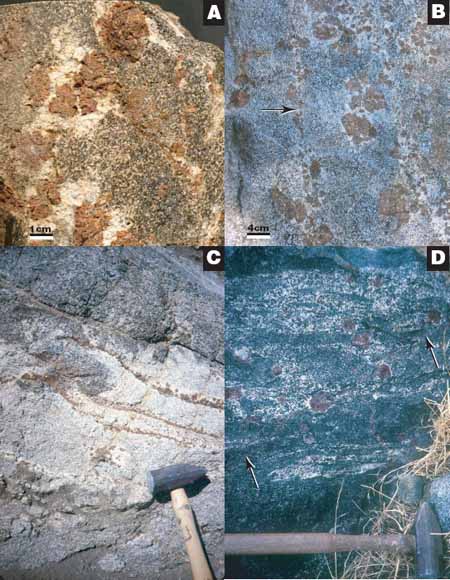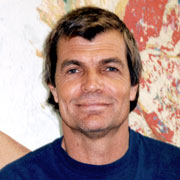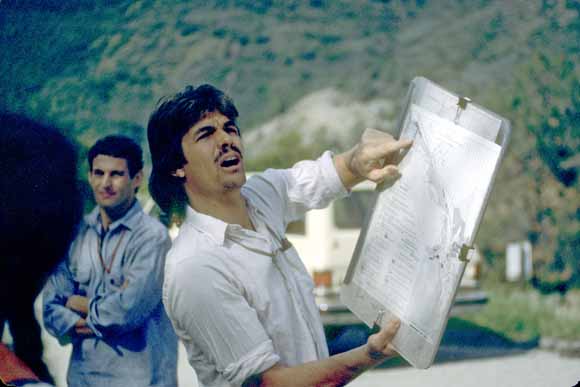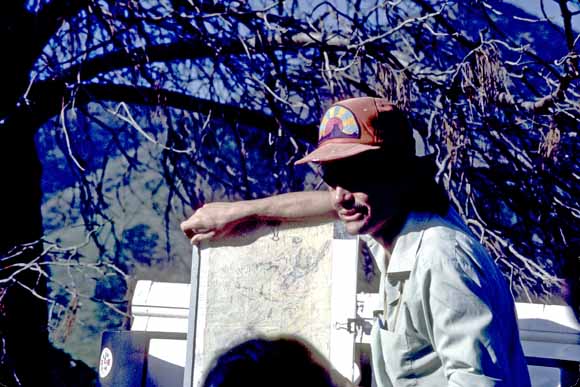
Location: Stanford University
see Map showing Mitchell and GeoCorner Room 320
This will be the 388th meeting since 1954

The Tehachapi complex lies at the southern end of the Sierra Nevada batholith adjacent to the Neogene-Quaternary Garlock fault. The complex is composed principally of high-pressure (8-10 kbar) Cretaceous batholithic rocks, and it represents the deepest exposed levels of a continuous oblique crustal section through the southern Sierra Nevada batholith. Over the southern ~100 km of this section, structural/petrologic continuity and geochronological data indicate that ≥35 km of felsic to intermediate- composition crust was generated by copious arc magmatism primarily between 105 and 99 Ma. In the Tehachapi complex, these batholithic rocks intrude and are bounded to the west by similar-composition gneissic-textured high-pressure batholithic rocks emplaced at ca. 115-110 Ma. This lower crustal complex is bounded below by a regional thrust system, which in Late Cretaceous time tectonically eroded the underlying mantle lithosphere, and in series displaced and underplated the Rand Schist subduction assemblage by low-angle slip from the outboard Franciscan trench. Geophysical and mantle xenolith studies indicate that the remnants of this shallow subduction thrust descend northward through the crust and into the mantle, leaving the mantle lithosphere intact beneath the greater Sierra Nevada batholith. This north-dipping regional structure records an inflection in the Farallon plate, which was segmented into a shallow subduction trajectory to the south and a normal steeper trajectory to the north.

Jason Saleeby


Reservations: The preferred way to make reservations is simply to email Janice Sellers at janicemsj@gmail.com by April 6, tell her you will attend, commit to pay, and bring your payment to the meeting. Janice always emails a confirmation; if you don't get one, assume email crashed yet again and email her a second time. A check made to "PGS" is preferred, payable at the meeting.
If you want to pay in advance:
Stanford faculty and students: Please make dinner reservations by April 6. Contact Dr. Elizabeth Miller via her mailbox (and leave check), Geological and Environmental Sciences Office, Geocorner - Bldg. 320 (Rm. 205). Make checks out to "PGS."
All others, including faculty and students from other Bay Area universities and colleges and USGS: Please make dinner reservations by April 6. Contact Janice Sellers, at 1066 28th Street, Oakland, CA 94608-4547, (510) 268-8254. Send check made out to "PGS" to Janice.
Dinner is $30.00. Includes wine (5:30 to 6:15 PM.) and dinner (6:15-7:30 PM.).
For students from all universities and colleges, the dinner, including the social 3/4-hour, is $5.00 and is partially subsidized thanks to the School of Earth Sciences, Stanford University (Note, no-show reservations owe the full price).
Doris, whose wonderful crew prepares our meals, asked that we let you know that people who are late RSVP'ing and people who show up without a reservation will be welcome but that they will be eating on paper plates with plastic utensils (food supply permitting).
Dues for Academic Year 2006-2007 ($10.00) should be sent to Janice Sellers, 1066 28th Street, Oakland, CA 94608-4547. Janice's phone: (510) 268-8254.
Officers: Ray Wells, President; Dwight Harbaugh and Elizabeth Miller, Co-Vice Presidents; Mike Diggles, Secretary; Janice Sellers, Treasurer; Bob Coleman, Field-Trip Czar

Date created: March 27, 2007
Last modified: March 28, 2007
Created by: Mike Diggles, Webmaster-Secretary, PGS.